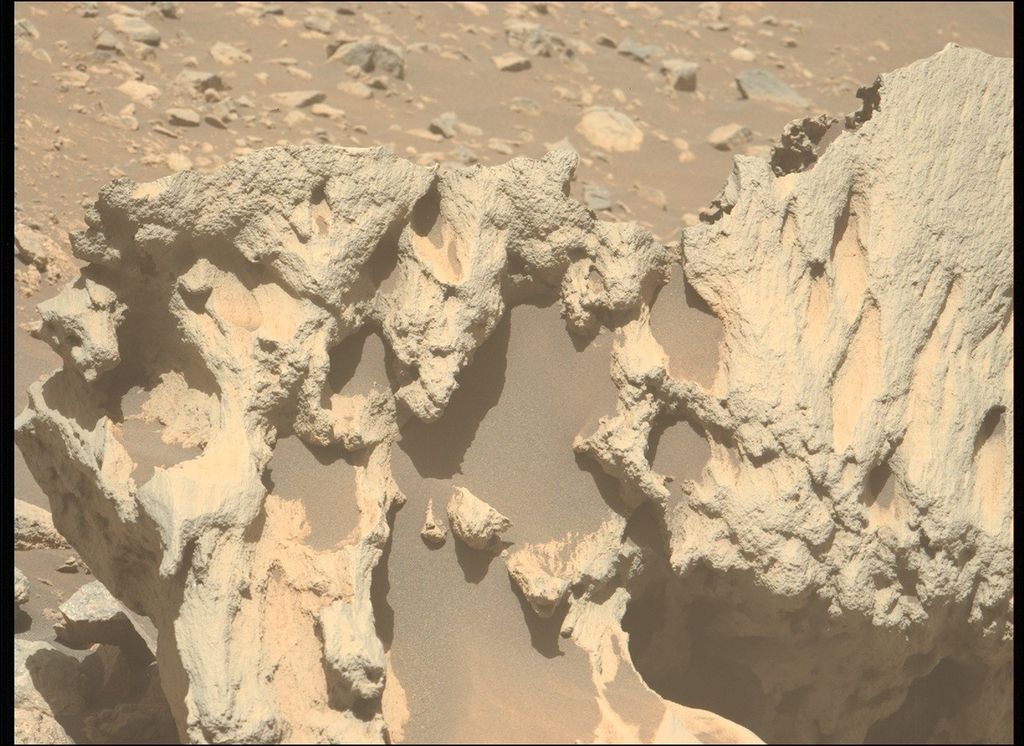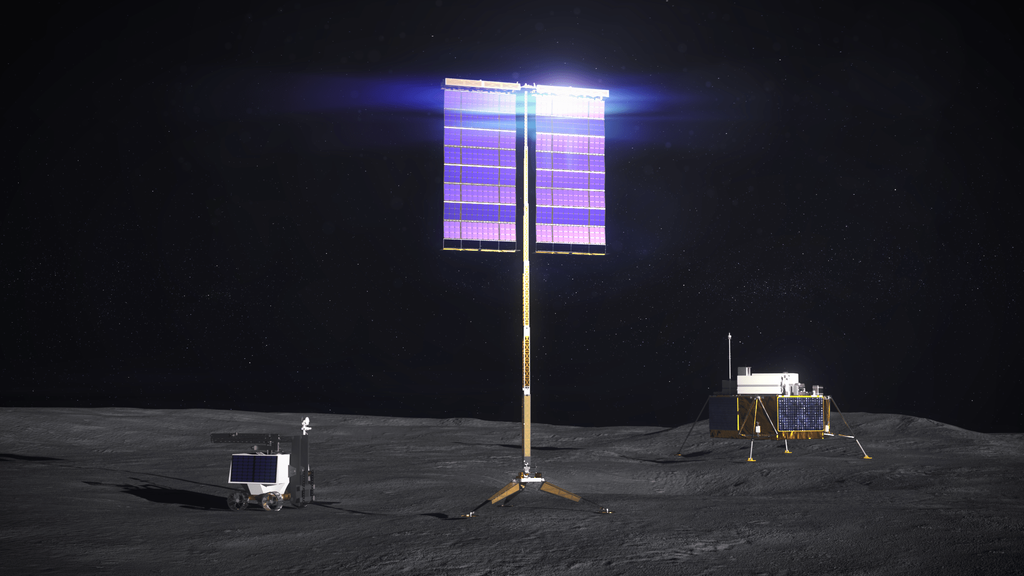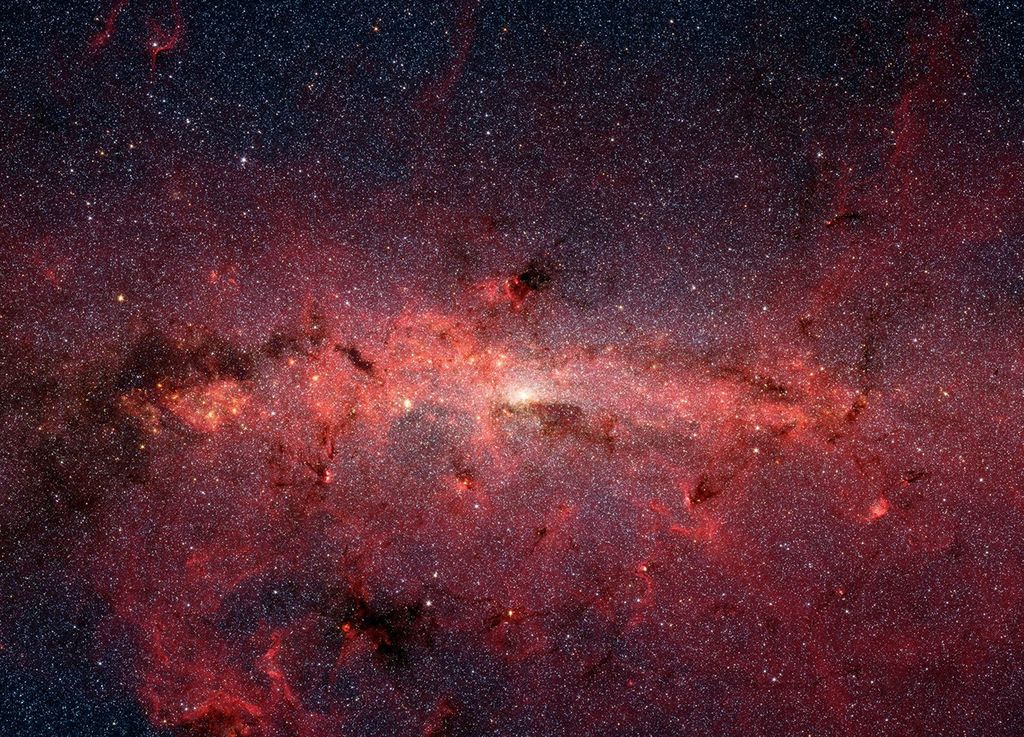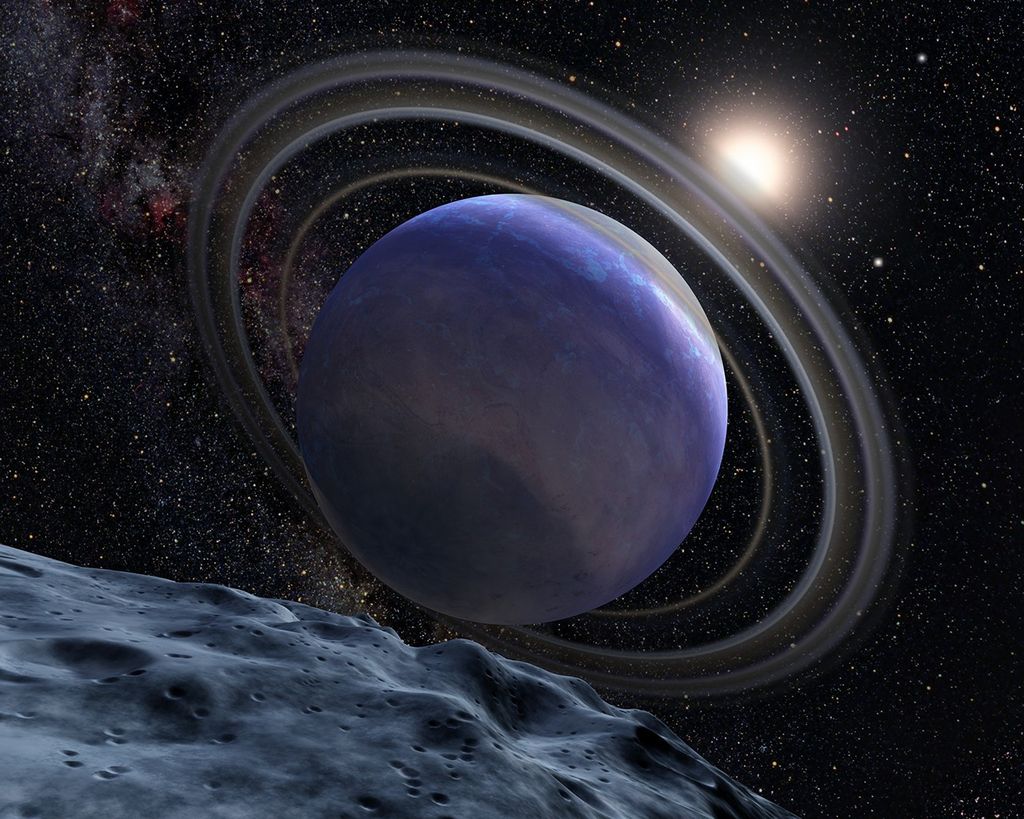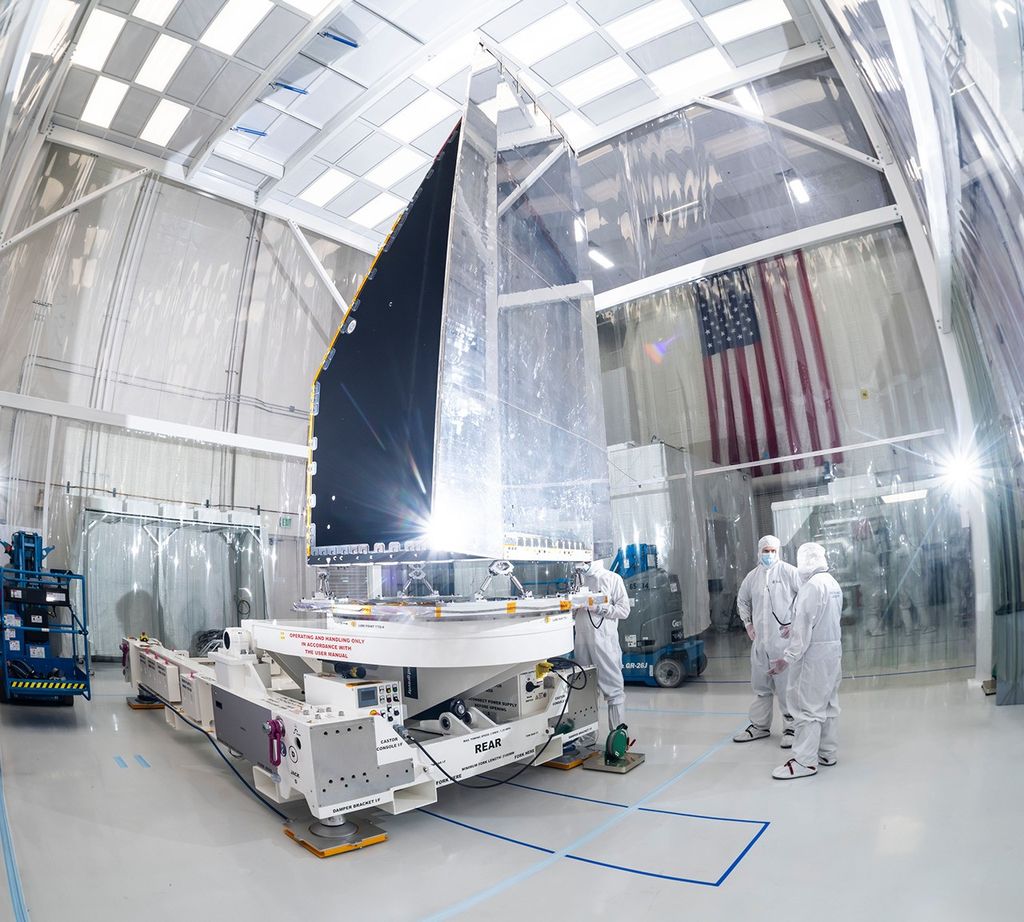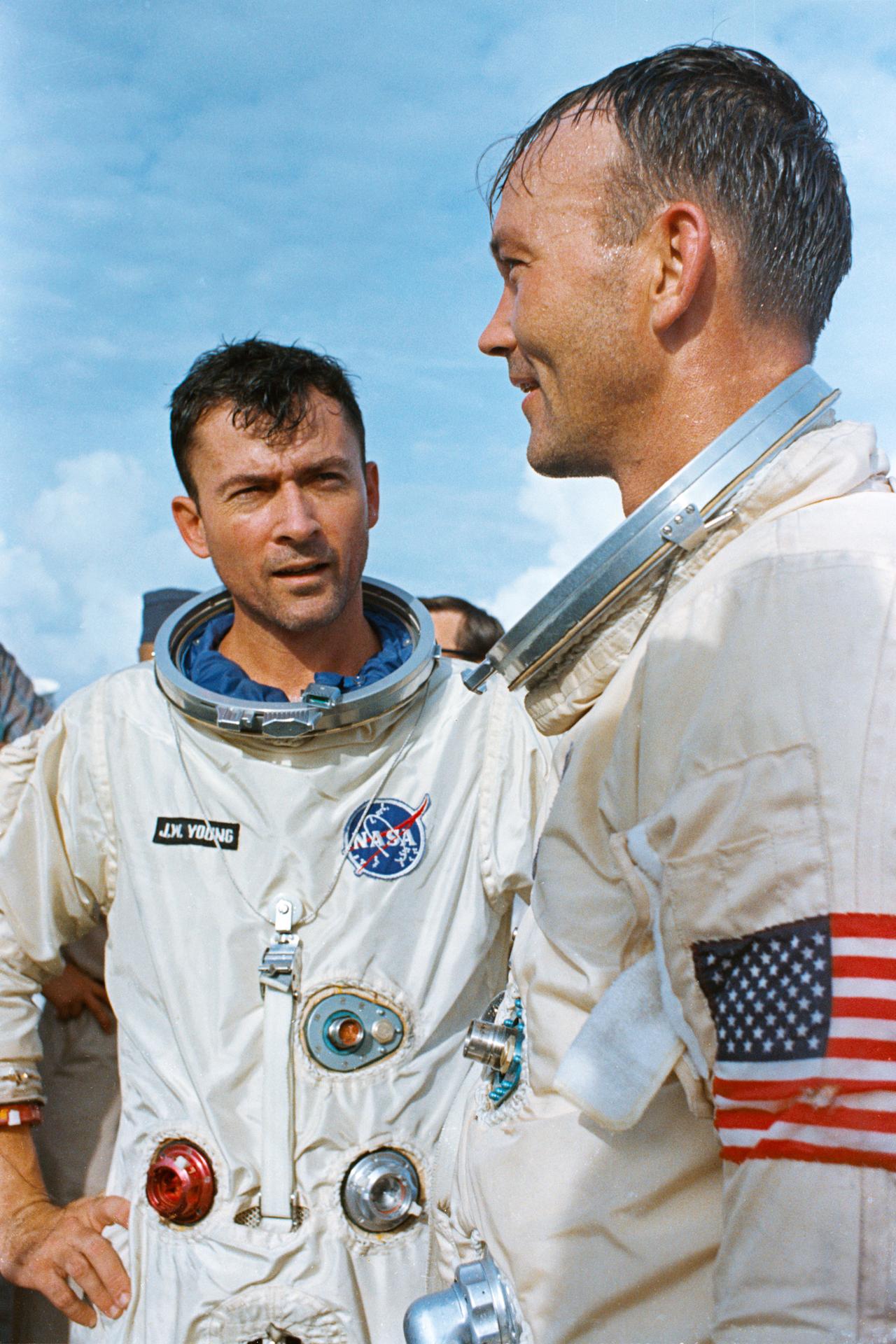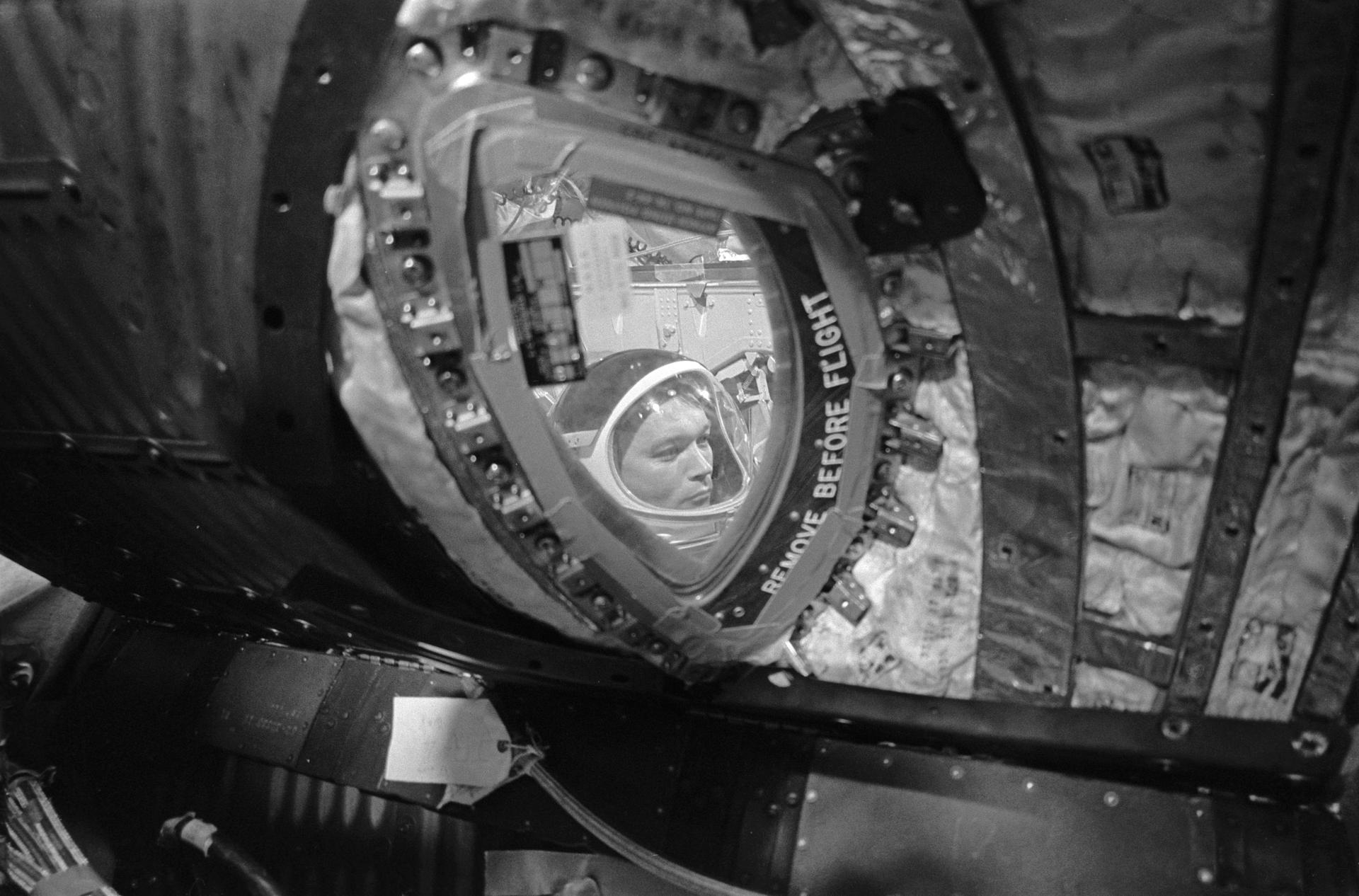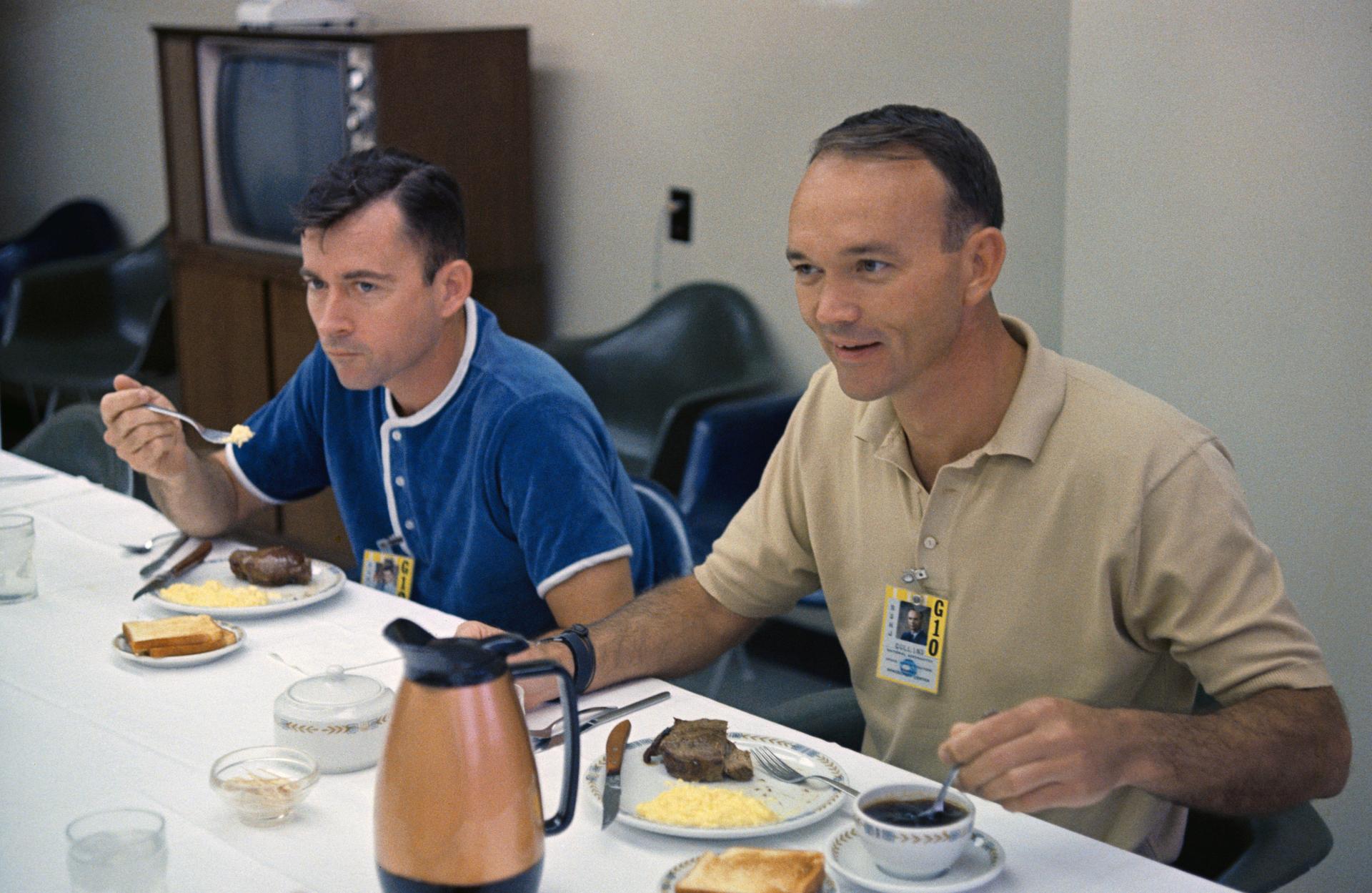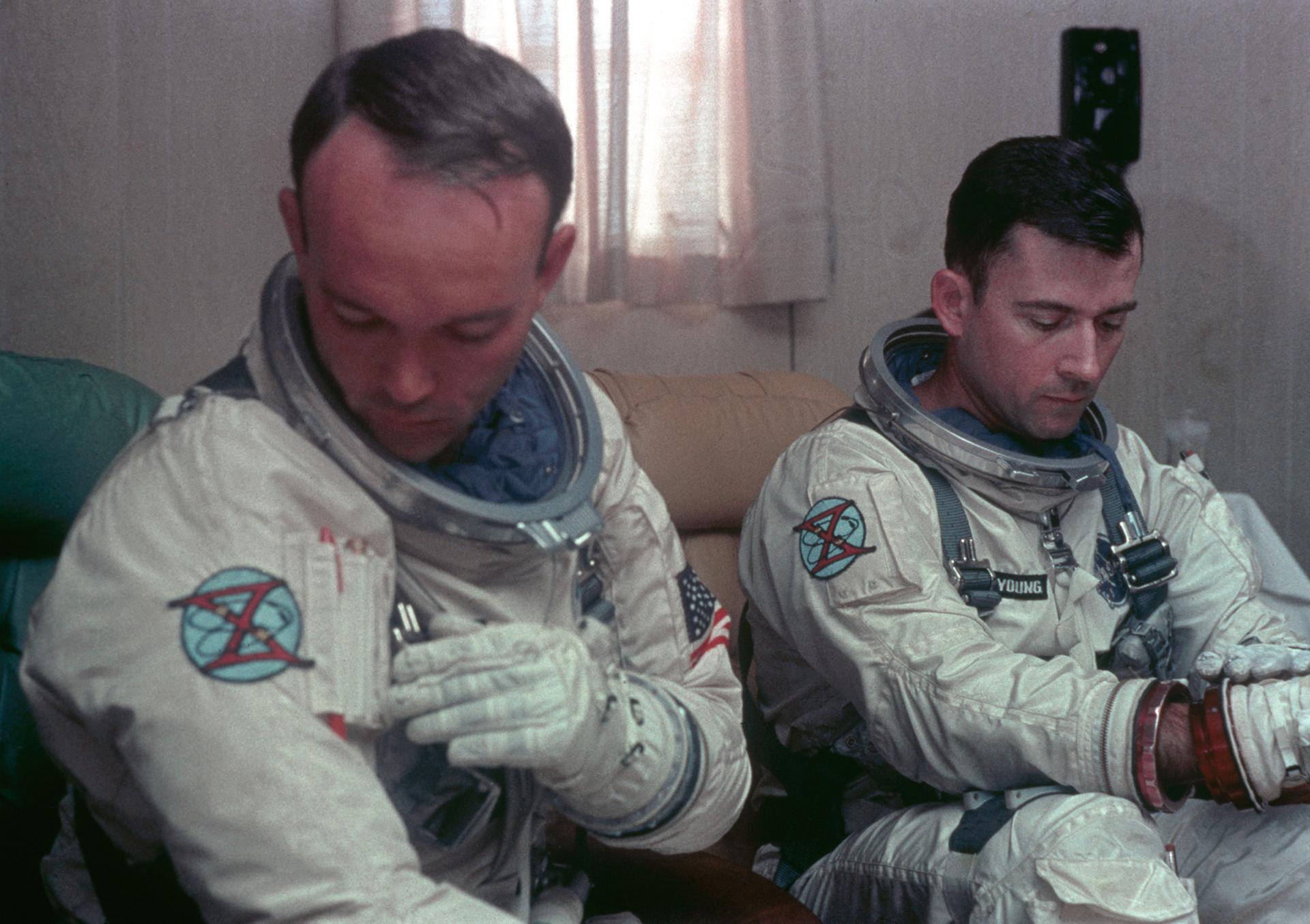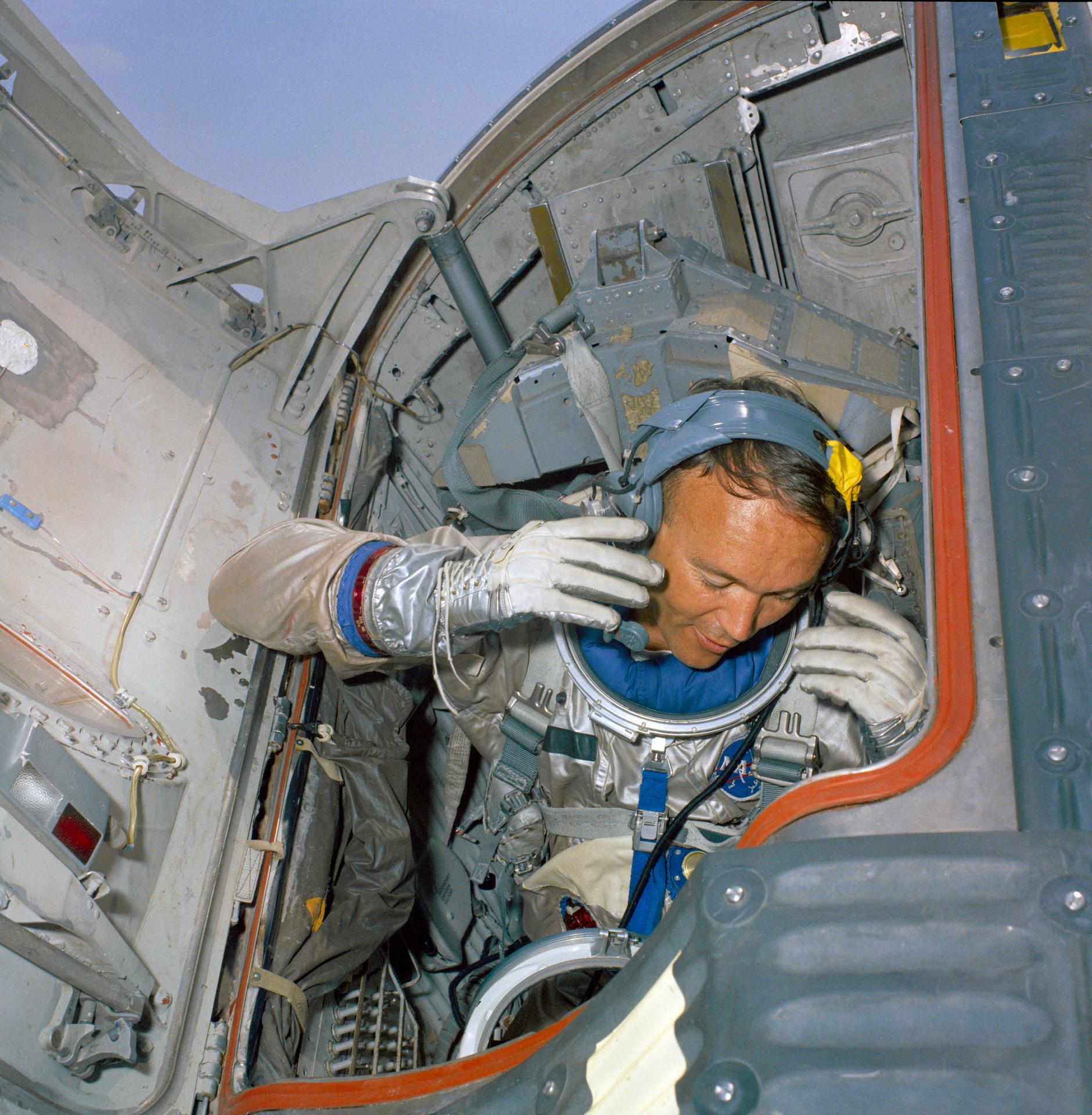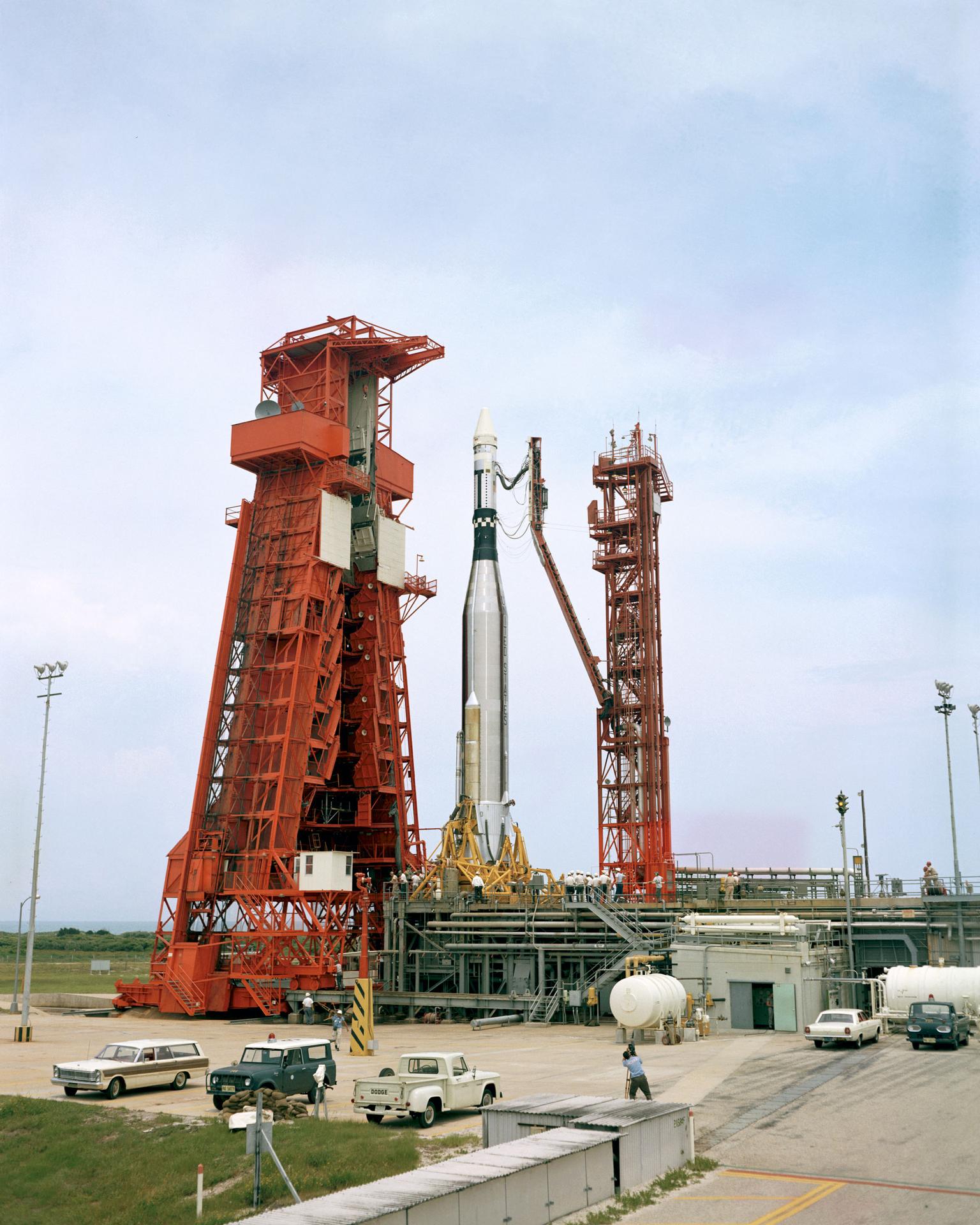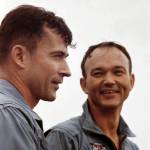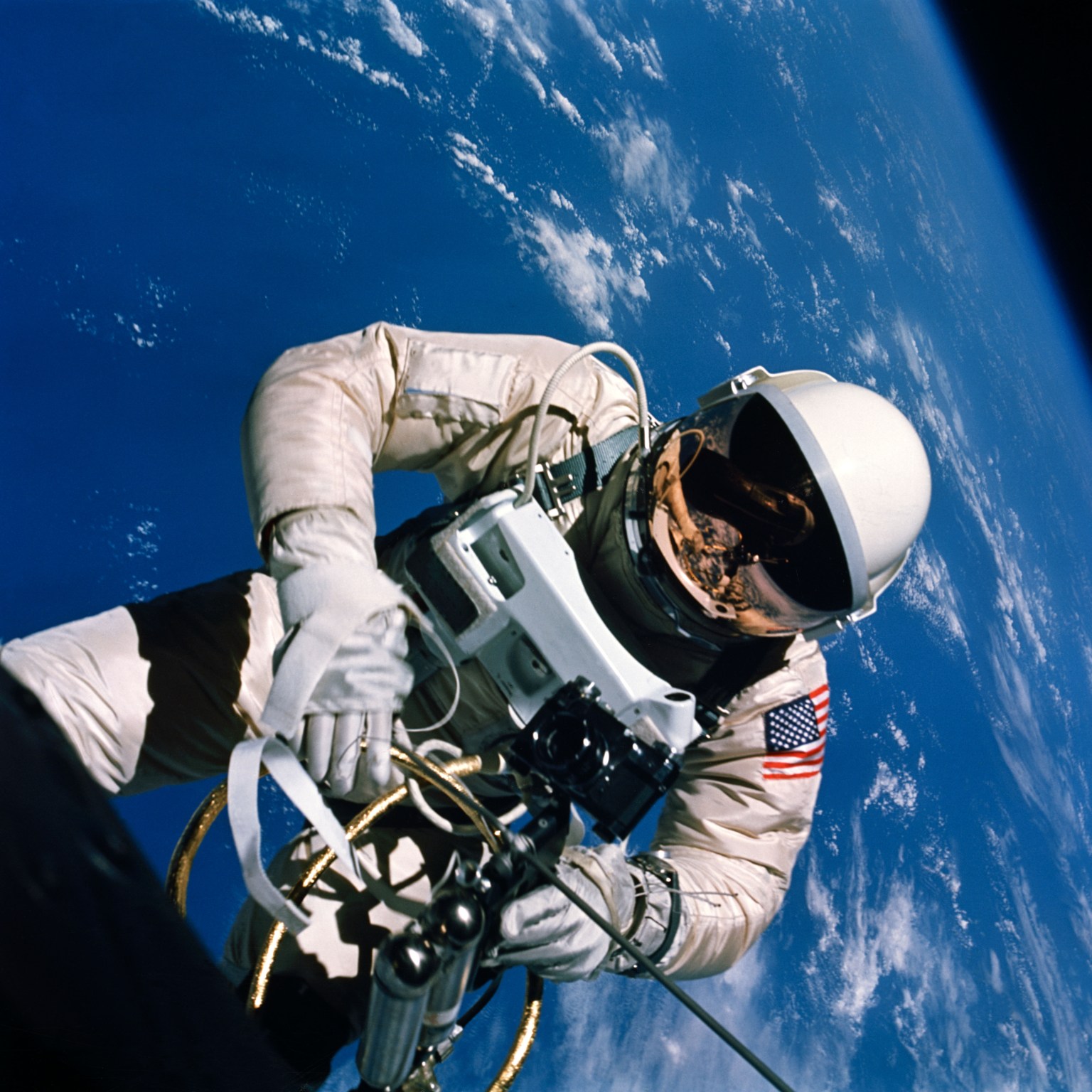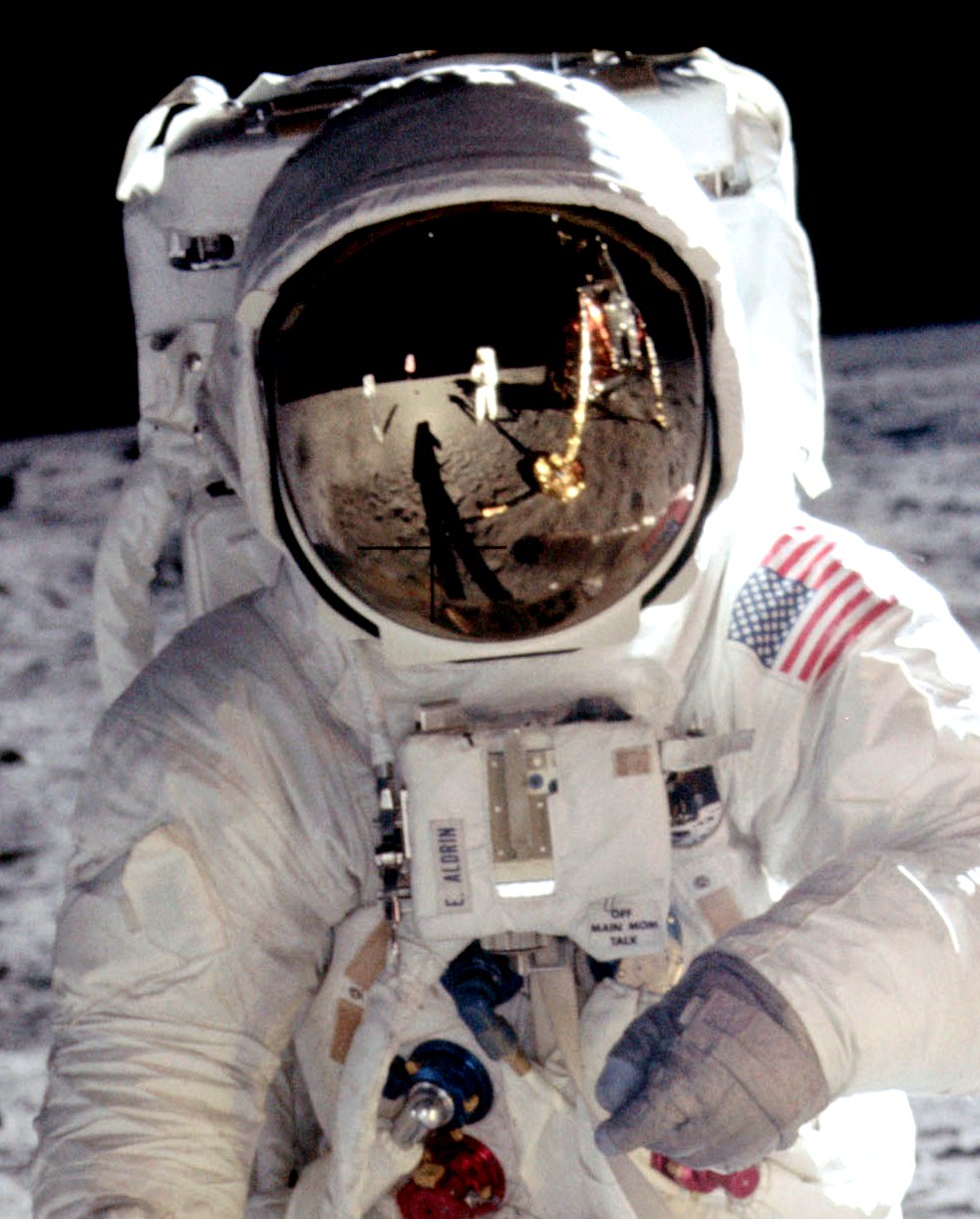
Gemini X
Astronauts John W. Young and Michael Collins flew on Gemini X, the eighth crewed flight of the Gemini program. The successful mission included a docking with their Agena Target Vehicle, boosting to a record altitude (for a crewed spaceflight) of 763.8 km, a rendezvous with the Gemini VIII target vehicle, two spacewalks, and more than a dozen experiments.
Mission Type
mission duration
Launch
Landing
Objectives
Gemini X was the eighth crewed Earth-orbiting spacecraft of the Gemini series, carrying astronauts John Young and Michael Collins. Its primary purpose was to conduct rendezvous and docking tests with the Agena target vehicle. The mission plan included a rendezvous with the Gemini VIII Agena target, two extravehicular activity (EVA) excursions, and the performance of 15 scientific, technological, and medical experiments. The scientific experiments were related to (1) zodiacal light, synoptic terrain, and synoptic weather photography, (2) micrometeorite collections, (3) UV astronomical camera, (4) ion wake measurements, and (5) meteoroid erosion.
Gemini X Set Records for Rendezvous, Altitude Above Earth
In mid-1966, Gemini X continued advancing NASA’s capabilities for operating in space with a record-setting, three-day flight. Two astronauts completed…
Read the Story
Milestones
Jul. 18, 1966: Launch of the Gemini Agena Target Vehicle-10 and of the Gemini X mission.
Jul. 19, 1966: Rendezvous with Gemini VIII Agena Target Vehicle; 49-minute standup EVA by Collins.
Jul. 20, 1966: Separation from Gemini Agena Target Vehicle-10. Collins completes a 39-minute spacewalk.
Jul. 21, 1966: Splashdown in the western Atlantic.
Mission Facts
Crew: John W. Young (Command Pilot) and Michael Collins (Pilot)
Backup Crew: Alan L. Bean and Clifton C. Williams Jr.
Payload: Gemini 10
Mass at launch: 3,763 kg
Launch Date: Jul. 18, 1966, 5:20:26 p.m. EST (22:20:28 UT)
Launch Site: Complex 19, Cape Canaveral, United States
Launch Vehicle: Titan II
Revolutions Completed: 43
Duration: 70 hours, 46 minutes, 39 seconds (2 days, 22 hours, 46 minutes, 39 seconds)
Landing Date: Jul. 21, 1966, 4:07:05 p.m. EST (21:07:05 UT)
Landing Site: Western Atlantic Ocean, 26.74° N 71.95° W
Recovery Ship: U.S.S. Gaudalcanal
John W. Young
Command Pilot
In September 1962, John W. Young was selected as an astronaut in NASA’s second astronaut group. Gemini X was his second spaceflight. He was the first person to be launched into space six times from Earth. He logged more than 15,275 hours flying time in various aircraft, and 835 hours in space over six space flights.
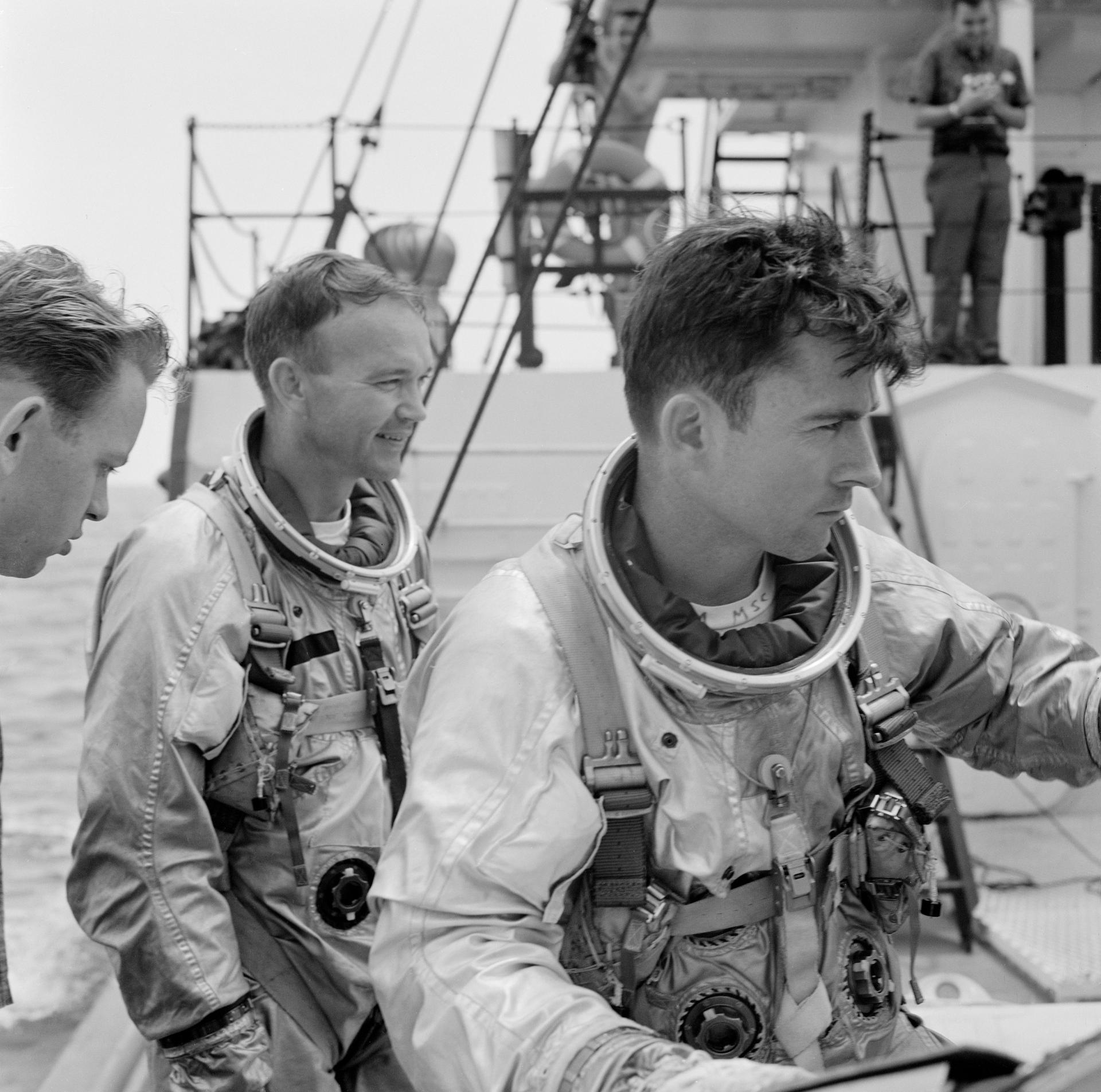
Michael Collins
Pilot
Having served as a fighter pilot and test pilot in the U.S. Air Force, Michael Collins was chosen to become an astronaut as part of NASA’s third astronaut class in 1963. His first space flight was Gemini X, on which he performed two spacewalks. In July 1969, he was the command module pilot for the historic Apollo 11 Moon landing mission.
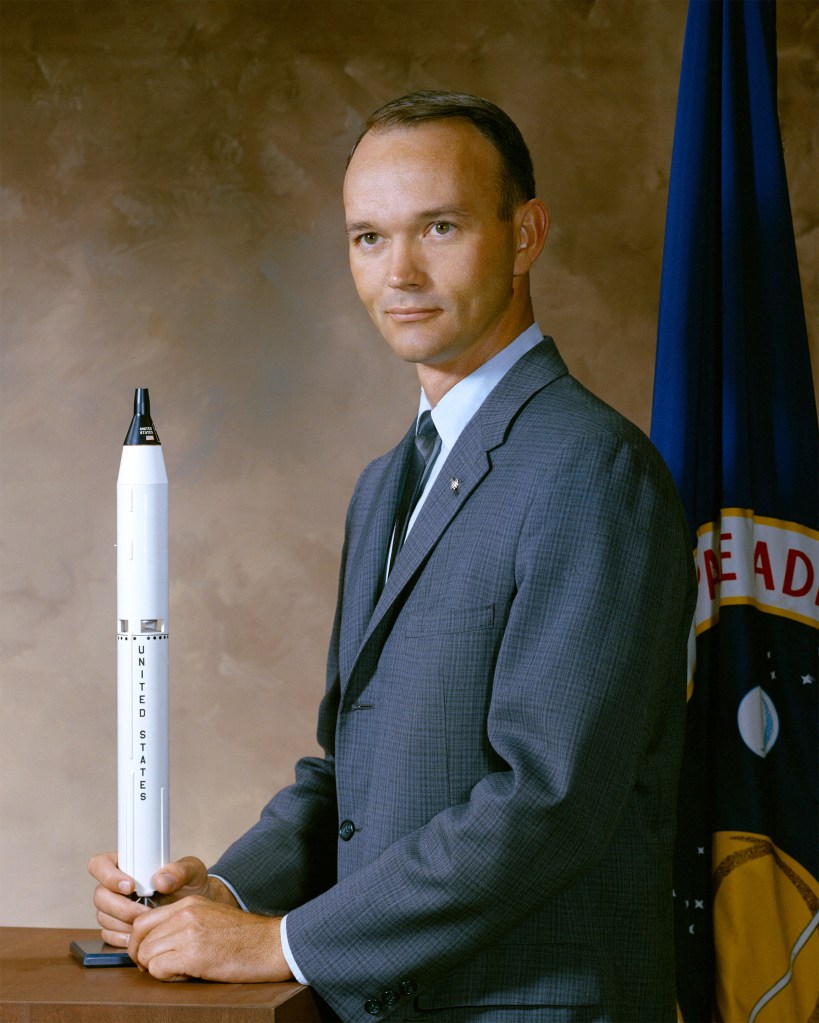
Mission Overview
Gemini X was launched on Jul. 18, 1966, from Complex 19 at 5:20:26 p.m. EST (22:20:26 UT) and inserted into a 159.9 x 268.9 km orbit. At orbit insertion Gemini X was about 1,600 km behind the Gemini Agena Target Vehicle 10 (GATV-10) which had been launched into a near circular orbit about 100 minutes earlier. Rendezvous with GATV-10 was achieved on the fourth revolution at 10:43 p.m. At 11:13:03 p.m., docking was achieved. A large out-of-plane error in the initial orbit required the Gemini to use 60% of its fuel for the rendezvous, over twice the planned amount. As a result, most of the mission plan was revised. To conserve fuel, Gemini X remained docked to GATV-10 for the next 39 hours and used the GATV propulsion system for maneuvers. The planned docking practice runs were cancelled.
A 14-second burn of the GATV-10 primary propulsion system was used to raise the dual spacecraft apogee to 764 km. While the spacecraft were docked, a bending mode test was conducted to study spacecraft dynamics and other experiments were performed. Another burn of GATV-10 at 3:58 p.m. on Jul. 19, brought the spacecraft into the same orbit as the GATV-8, which had been launched on Mar. 16 for the Gemini VIII mission. At 4:44 p.m. the Gemini cabin pressure was reduced to zero and the hatch was opened. Collins stood up in his seat 3 minutes later and began photographing stellar UV radiation. Partway into the standup EVA Young and Collins began to experience severe eye irritation from an unidentified source and Young ordered termination of the EVA. Collins sat down and the hatch was closed at 5:33 p.m., and a high oxygen flow rate was used to purge the environmental control system.
Gemini X separated from GATV-10 at 2:00 p.m. EST on Jul. 20. A series of manuevers using its own thrusters brought Gemini X within about 15 meters of GATV-8. At 6:01 p.m. (48:41 ground elapsed time) the cabin was evacuated and the hatch opened for Collins to begin his second EVA. Collins left the spacecraft 6 minutes later attached to an umbilical cord and travelled to the GATV-8. Despite difficulties due to lack of handholds on the target vehicle Collins removed the fairing and retrieved the micrometeoroid detection equipment. During the EVA he lost his camera. He also retrieved the micrometeorite experiment mounted on the Gemini X spacecraft, but this apparently floated out of the hatch and was lost when Collins reentered the capsule. The EVA was limited to 25 minutes of outside activity due to lack of fuel. Collins reentered the capsule at 6:32 p.m. and the hatch was closed at 6:40. The hatch was reopened again at 7:53 p.m. to jettison 12 items before reentry. After about three hours of stationkeeping Gemini X moved away from GATV-8. At 8:59 p.m., the crew performed an anomaly adjust maneuver to minimize reentry dispersions resulting from the retrofire maneuver.
Retrorocket ignition took place during the 43rd revolution on Jul. 21 at 3:30:50 p.m. EST and splashdown occurred at 4:07:05 p.m. in the western Atlantic at 26.74° N, 71.95° W, 875 km east of Cape Kennedy and 6.3 km from the target point. The crew was picked up by helicopter and taken to the recovery ship U.S.S. Guadalcanal at 4:34 p.m. and the spacecraft was aboard at 5:01 p.m. Total mission elapsed time was 70:46:39. Of the primary objectives, only the docking practice was not accomplished due to lack of fuel, although the fuel budget also resulted in small revisions in some of the other objectives. The first rendezvous and docking maneuvers were successfully accomplished. All experiments obtained data except for the Gemini X micrometeorite collector, which was lost by floating out of the spacecraft. The landmark contrast measurement experiment was deleted due to lack of fuel. Gemini X demonstrated the ability of an astronaut to travel to another spacecraft and back and the use of powered, fueled satellite to provide propulsion for a docked spacecraft.

The primary goals of Project Gemini included proving the techniques required for the Apollo Program to fulfill President John F. Kennedy’s goal of landing a man on the Moon and returning him safely to Earth before the end of the…
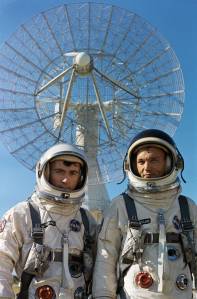
Astronauts John W. Young (left), command pilot, and Michael Collins, pilot, the Gemini-10 prime crew during a photo session for the press outside the Kennedy Space Center (KSC) Mission Control Center on July 16, 1966. Both men are wearing their…
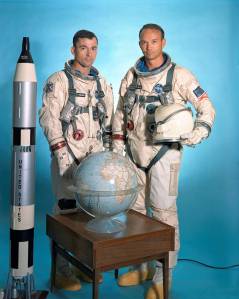
The Gemini X prime crew was made up of astronauts John W. Young (left), command pilot, and Michael Collins, pilot.
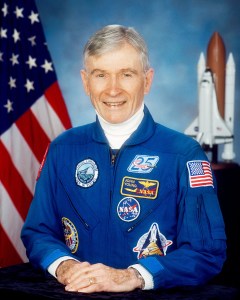
By Bob Granath NASA’s Kennedy Space Center, Florida In memory of NASA astronaut John Young, Kennedy Space Center Director Bob Cabana placed a memorial wreath at the Heroes and Legends exhibit at the center’s visitor complex. The brief ceremony took…

In mid-1966, Gemini X continued advancing NASA’s capabilities for operating in space with a record-setting, three-day flight. Two astronauts completed rendezvous with two separate targets, retrieved an experiment package from another orbiting object and set a new altitude record for…




